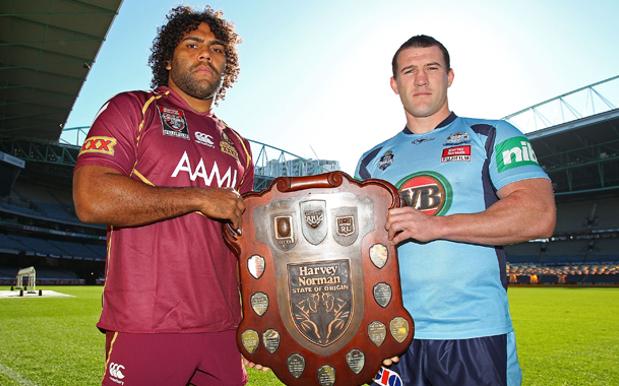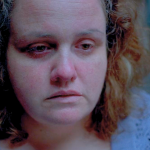The NRL‘s annual bonanza of state vs state, mate vs mate that is the State of Origin begins its annual slugfest next week, with Game 1 between traditional rivals Queensland and New South Wales kicking off in Brisbane. Despite waning popularity for the NRL as a whole, the annual clash between the Blues and the Maroons remains one of the biggest sporting events on the Australian calendar, and arguably brings in more casual viewers of Rugby League than the NRL Grand Final. It works for a few reasons: Namely, the dominance of the sport above the Barassi Line, and the tribal nature that it brings. The last time the AFL – being the largest sport in the country, as well as the fourth most attended sport on average in the world – attempted State of Origin was in 1999. So why does Australian Rules Football not run similar representative games? And how would it work in 2014?
THE PROBLEMS
When the AFL became a national competition, it decentralised the tribal nature that remains essential to representative games. Victorian teams were already recruiting from interstate leagues, and the advent of the draft furthered that. You’d be hard pressed to find fans dedicated enough to know exactly which state players on their favourite team originate from. And, in fact, even the writing of this article required a few hours of solid research into player origins.
When the West Coast Eagles and the Adelaide Crows entered the competition, the sides fielded were essentially representative sides of the WAFL and the SANFL respectively (Adelaide’s colours were taken from the South Australian representative jumper). Interest in seeing very-slightly-modified versions of these sides in representative action, quite rightly, waned.
More to that, as the game became more professional, players were wary of needless injuries occurring during – for all intents and purposes – meaningless games during the middle of the season. Coaches actively rallied against star players declaring eligibility.
THE SOLUTION
Interest in State of Origin for the AFL does exist, but the right format needs to be found. Mid-season games are right out of the question; if the format is to succeed, the game’s best players need to be on the field. Instead, an end-of-year, two weekend carnival would be a much better fit.
Two weeks after the Grand Final (allowing premiership players to participate) the series begins with an abridged round robin format, not unlike the Pre-Season cup format, to determine seeding. The competition includes teams from Victoria, South Australia, Western Australia, and an amalgamated Allies side comprising the best players from Tasmania, New South Wales, Queensland, New South Wales, the ACT, the Northern Territory, and International.
The four teams face off on weekend one in a round robin format. Each game consists of two 15 minute halves (with no time-on) in a schedule that looks as follows:
Game 1: Victoria vs South Australia
Game 2: Western Australia vs Allies
Game 3: Allies vs South Australia
Game 4: South Australia vs Western Australia
Game 5: Western Australia vs Victoria
Game 6: Victoria vs Allies
Following the conclusion of the round robins, a ladder is formed based on wins, losses and percentages. In weekend two, the first and second teams play off for the State of Origin shield, and the bottom two play off for third place. The ladder rankings also determine which state hosts the games, with 1st and 3rd given the home ground advantage.
In terms of talent, prospective teams could look a little something like the following (based largely on form, ignoring injuries):
VICTORIA – The Big V
B: Josh Gibson, Scott Thompson, Nick Malceski
HB: Michael Hibberd, David Mundy, Brendon Goddard
C: Josh P Kennedy, Jobe Watson, Joel Selwood
HF: Patrick Dangerfield, Jarryd Roughead, Steve Johnson
F: Steele Sidebottom, Travis Cloke, Richard Douglas
FOLL: Shane Mumford, Scott Pendlebury, Gary Ablett
INT: Todd Goldstein, Sam Mitchell, Adam Goodes, Travis Boak (sub)
SOUTH AUSTRALIA – The Croweaters
B: Shannon Hurn, Brian Lake, Corey Enright
HB: Andrew Mackie, Sam Fisher, Beau Waters
C: Brad Ebert, Ryan Griffen, Shaun Burgoyne
HF: Hamish Hartlett, Matthew Pavlich, Justin Westhoff
F: Eddie Betts, Jay Schultz, Chad Wingard
FOLL: Will Minson, Scott Thompson, Kane Cornes
INT: Adam Cooney, Lindsay Thomas, Jonathan Giles, Angus Monfries (sub)
WESTERN AUSTRALIA – The Sandgropers
B: Luke McPharlin, Darren Glass, Harry Taylor
HB: Cale Hooker, Michael Johnson, David Swallow
C: Harley Bennell, Matt Priddis, Andrew Swallow
HF: Mark LeCras, Lance Franklin, Lewis Jetta
F: Hayden Ballantyne, Josh J Kennedy, Daniel Wells
FOLL: Dean Cox, Nat Fyfe, Stephen Hill
INT: Nic Naitanui, Bradley Hill, Daniel Rich, Tom Mitchell (sub)
THE ALLIES
B: Nathan Grima, Daniel Merrett, Jarrod Harbrow
HB: Grant Birchall, Rory Thompson, Mitch Robinson
C: Isaac Smith, Lenny Hayes, Pearce Hanley
HF: Luke Breust, Nick Riewoldt, Steven Motlop
F: Jack Riewoldt, Tom Hawkins, Cyril Rioli
FOLL: Tom Bellchambers, Jarrad McVeigh, Kieren Jack
INT: Mike Pyke, Dayne Zorko, Ben McGlynn, Mathew Stokes (sub)
Whilst the Victorian team is, obviously, over-stacked with talent, the teams provide some extremely interesting propositions. Western Australia’s forward line looms as ominous, and the Allies back six is as solid as any in the league.
The format, overall, does have the potential to work. However there needs to be a carnival-like atmosphere to the games, to give them meaning beyond arbitrary representation. This, in turn, creates a shade more importance to the selection of All-Australian. Ultimately, the challenge for State of Origin in the AFL is to find a format that allows for the best players to be on the park. That is how you get the players to care about it. And that is how, in turn, the crowds will return to the format.
Photo via Getty Images.




